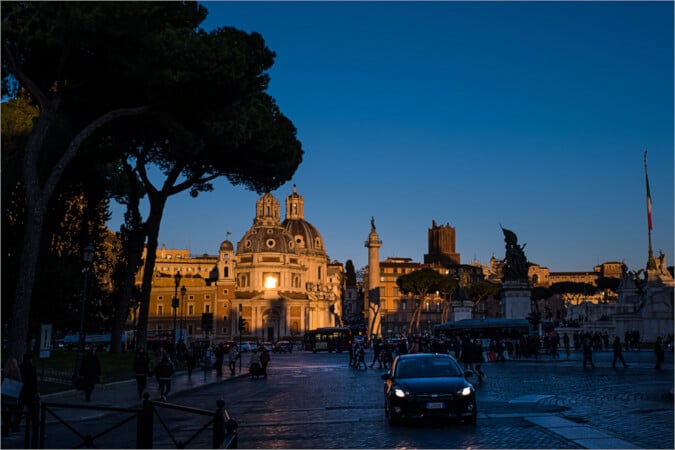“Invisible” Solar Panels Retain Heritage, Boost Sustainability
Two innovative photovoltaic technologies from Dyaqua and Tegola Canadese effectively introduce renewable energy to historical sites while protecting architecture and heritage.
In Pompeii, millions of tourists visit every year to see the ruins left by the eruption of Mount Vesuvius in 79 AD. The Pompeii Archaeological Park preserves more than just this history; it provides a modern look into the ancient life of a Roman town from over 2,000 years ago. The park has chosen to install solar panels disguised as terracotta tiles to match the existing architecture without disrupting the appearance to protect this experience.

An example of terracotta-style Invisible Solar. Image used courtesy of POCITYF
A Sustainable Alternative to Poles and Cables
This decision allows them to introduce sustainable development while still keeping some parts of the city fully preserved, according to the archaeological park's director Gabriel Zuchtriegel. As the park requires extensive lighting, the tiles present an incredibly cost-efficient opportunity and a preferred alternative to adding electricity poles and cables to the landscape.
The unique solar panels were created and patented by Dyaqua, a family business in Camisano Vicentino, Italy, started by the Battista family and now has two employees. Giovanni Battista came up with the idea for Invisible Solar after designing LED lamps resembling common building materials to make public lighting more pleasing to the eye. The Invisible Solar Photovoltaic Roof Tile was created to help historic centers find a solution for installing solar while maintaining the architecture.
The tiles are built using a non-toxic, recyclable polymer layer that allows sunlight to filter through to a layer of photovoltaic cells underneath. The top layer can be designed to look like several building materials‒stone, wood, concrete, or brick–allowing the tiles to be installed on walls and floors in addition to roofs.
Invisible Solar Panels
In 2015, Invisible Solar was recognized by the Ministry of Cultural Heritage in Italy for its impact on improving energy efficiency in cultural heritage. Dyaqua has partnered with many local councils interested in renewable energy but limited by artistic or architectural constraints.
The solar tiles will soon be installed at Maxxi, Rome’s contemporary art museum. They will also be installed on public buildings in Split, Croatia, and Evora, Portugal. Evora, along with Alkmaar, in the Netherlands, is being used as a testing site with the European project Pocityf, introducing sustainability while maintaining existing architecture and heritage.

Maxxi National Museum of 21st Century Art. Image used courtesy of Adobe Stock
Evora is another city similar to Pompeii because it has very visible and unique architecture. While it would be possible to paint solar panels to help them blend into the roofs, doing so would drastically reduce their efficiency.
Tegola Canadese is managing other solar solutions in Evora alongside Dyaqua. They are currently working on installing solar at a sports hall, a scientific center, and two parking lots. However, their technology, called Tegosolar, is made from more traditional roofing material and more closely resembles modern shingles. Unlike most rooftop solar panels, Tegosolar does not protrude from the roof and cannot be seen from the road. It is also resistant to high winds and less dependent on the sun's location.
The challenge of not damaging historic sites or buildings while introducing options for renewable energy also led to highly innovative technological solutions. Invisible Solar and Tegosolar have become crucial components for conserving heritage sites.
Zuchtriegel wants tourists to see that cultural heritage can be properly maintained alongside the introduction of sustainable development.






